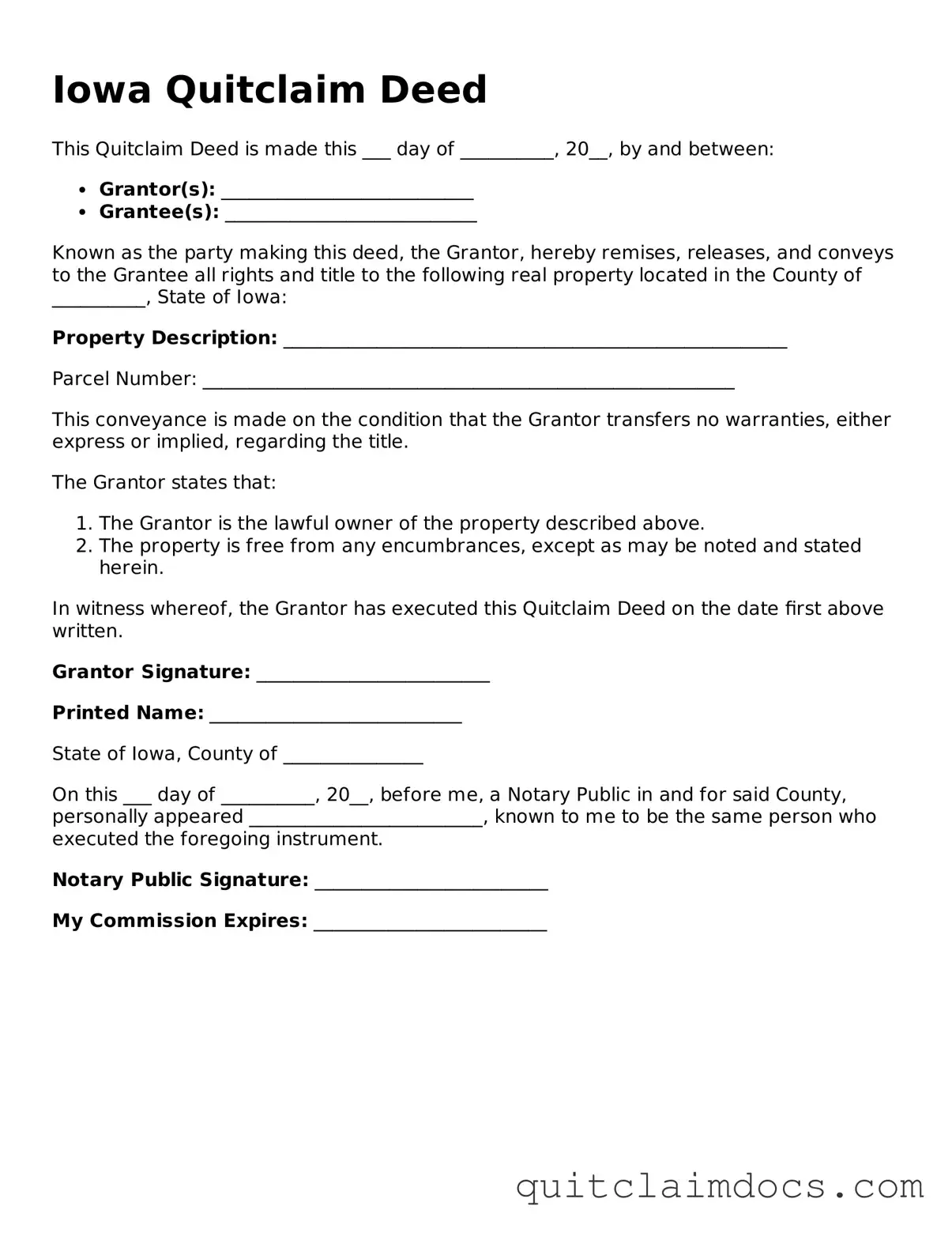Iowa Quitclaim Deed
This Quitclaim Deed is made this ___ day of __________, 20__, by and between:
- Grantor(s): ___________________________
- Grantee(s): ___________________________
Known as the party making this deed, the Grantor, hereby remises, releases, and conveys to the Grantee all rights and title to the following real property located in the County of __________, State of Iowa:
Property Description: ______________________________________________________
Parcel Number: _________________________________________________________
This conveyance is made on the condition that the Grantor transfers no warranties, either express or implied, regarding the title.
The Grantor states that:
- The Grantor is the lawful owner of the property described above.
- The property is free from any encumbrances, except as may be noted and stated herein.
In witness whereof, the Grantor has executed this Quitclaim Deed on the date first above written.
Grantor Signature: _________________________
Printed Name: ___________________________
State of Iowa, County of _______________
On this ___ day of __________, 20__, before me, a Notary Public in and for said County, personally appeared _________________________, known to me to be the same person who executed the foregoing instrument.
Notary Public Signature: _________________________
My Commission Expires: _________________________
